Types of Machetes for Every Wilderness or Survival Situation
Whether for survival or a simple trip into the wilderness, a machete is a tool you shouldn’t leave home without. In fact, ask any outdoors or survival enthusiast and they’ll agree that a good machete is as essential an item as a map or water canteen.
A machete doesn’t just provide safety and security against animals (and, sometimes, your fellow man!) in the wild; it also serves as an effective, all-purpose tool that makes a variety of wilderness jobs that much easier.
[the_ad_group id=”21″]
From prepping game and food to constructing shelters, clearing vegetation, and gathering and chopping firewood, a machete has a versatility that can’t be beaten by other wilderness or survival tools. In fact, the machete is still a staple weapon and tool in most indigenous cultures around the world whose livelihood rests on hunting, gathering, and the safety of the tribe.
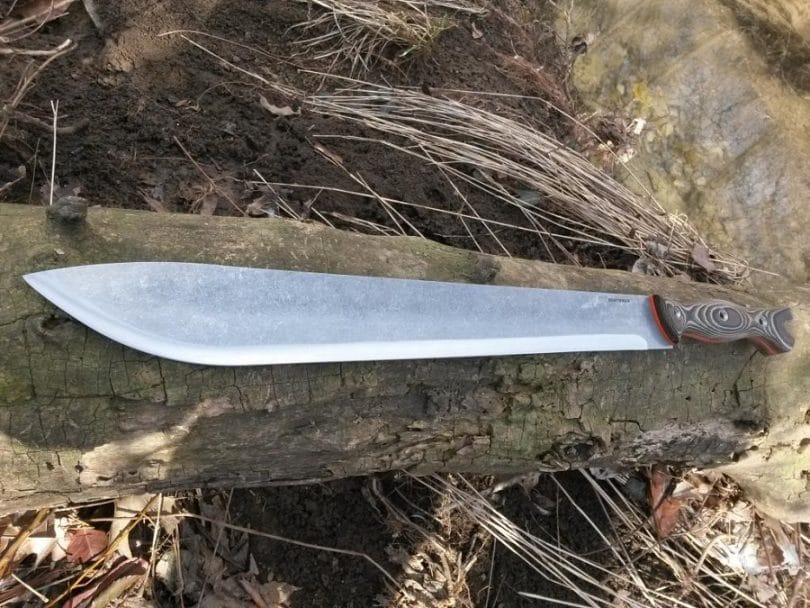
For wilderness and survival purposes, a machete is an effective, functional, and inexpensive choice. While the many types of machetes may seem overwhelming when you’re choosing one for the first time, with a little research, it’s easy to find the perfect machete for whatever wilderness situation you may find yourself in!
How to Choose A Machete
Before learning about the different machetes that are out there, it’s important to know some of the basics about this tool. A variety of factors will influence the type and style of machete that you choose, including:
- How you plan to use the machete
- Whether you will carry another tool, like a knife, hatchet, or axe
- Where you plan to use the machete (the type of wilderness environment)
- Whether you want to use the machete solely for survival or for wilderness activities
How are you going to use your machete? The use you plan to put this tool to plays a large part in determining the best type of machete to purchase. You’ll want a different type of machete if you plan to use it in the woods or wilderness versus if you plan to use it for urban survival situations.
Will you be carrying a knife, hatchet, or axe in addition to the machete? Some machetes have the features of and can perform tasks similar to those done by knives, hatchets, and axes, but if you already carry one of those other tools, you can look for a simpler, more minimalist machete.
See also: Best Tactical Hatchet: Top 7 Picks
On the other hand, if you need a tool that performs the tasks of all those listed here, you’ll want to look for a more multipurpose machete.

Where will you be using the machete? The type of machete that you buy also depends on the wilderness environment you plan to use it in. You’ll want a machete that is good at clearing vegetation, brush, and undergrowth if your adventures take you into deep woods or dense forests, but you won’t need the same kind of tool if you’re in a desert, swamp, or urban landscape.
Are you using the machete solely for survival purposes, or does it need to function in wilderness situations, too? If you’re only planning to use your machete for survival, you might choose a more basic tool.
However, if you intend your machete to perform various wilderness and backcountry activities, like setting up shelter, chopping wood, and prepping food, then you’ll likely select a more multipurpose tool.
Another factor that has an influence on the type of machete that you choose is the material the tool is made from. Machetes are, generally, constructed of one of two types of material, either carbon or stainless steel.
Carbon steel has long been used in the manufacture of machetes because of its durability, flexibility, strength, and ability to retain its sharpness. A machete made from carbon steel sharpens more easily than one made from stainless; moreover, it retains it sharpness longer than a stainless steel machete.
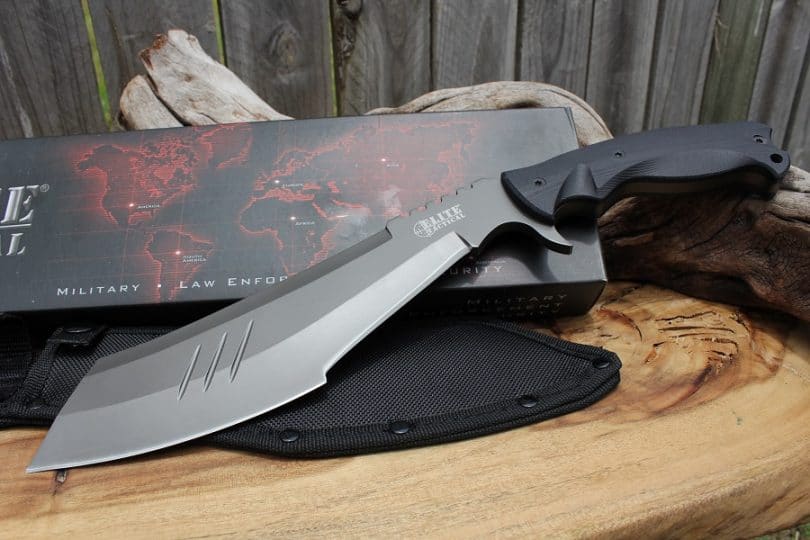
Unfortunately, the nature of carbon steels makes it liable to rust more easily than stainless steel, which functions well in wet environments. This can, however, be remedied by oiling a carbon machete regularly. WD-40 is a useful lubricant for a carbon machete and, in addition to removing oxidation, provides protection against the elements and future oxidation.
You can also use steel wool to clean a rusted carbon machete.
Popular Wilderness Machetes
Having an idea of how and where you want to use your machete will ensure that you choose the right type for your purpose, needs, and, importantly, the surrounding environment. Though there are many different kinds of machete available, wilderness and survival experts often select one of the machetes listed below.
Kukri Machete
Used widely in central Asian countries, the kukri machete provides excellent protection and utility. Its blade comprises three parts: a pointed, sharp tip for stabbing, a wide midsection ideal for chopping, and a narrow end near the handle for carving and whittling.
Whether you need to build a shelter, chop kindling or wood for a fire, or defend yourself against a wild predator, the shape and design of the kukri machete will let you do all those things and more.
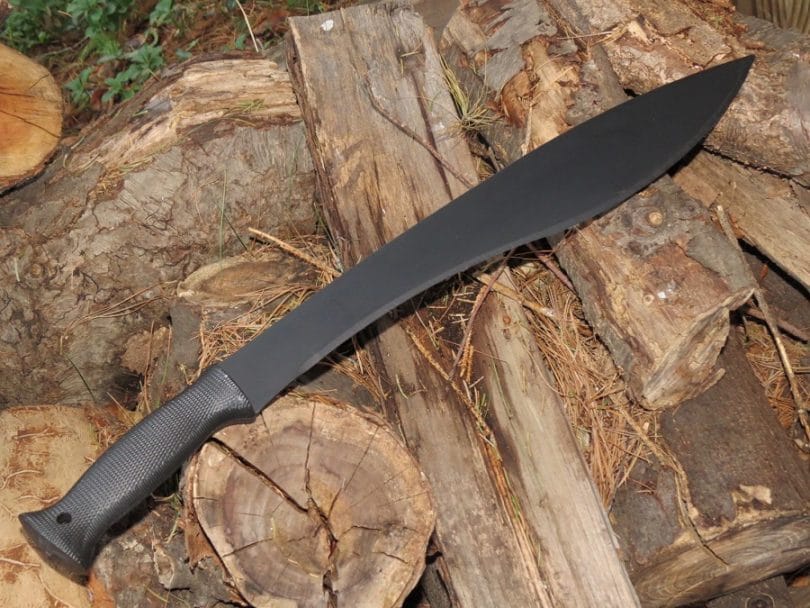
Its large size and heavy weight make the kukri ideal for chopping through heavy materials like wood, while the narrower part of the blade can be used to perform more intricate carving tasks. This machete is a good replacement tool for an axe, hatchet, or knife, making it ideal for someone who doesn’t want to carry multiple tools.
[the_ad_group id=”22″]
Although the kukri excels primarily at chopping tasks or for self-defense purposes, in a pinch it can also be used to clear brush.
Bolo Machete
The bolo machete originated in Southeast Asia and the Pacific Rim, and it’s no wonder: its thick, spear tipped blade makes short work of cutting into a coconut—or chopping down the whole tree. This weighted machete performs best on heavy tasks, making it ideal for chopping, slashing, and cutting.
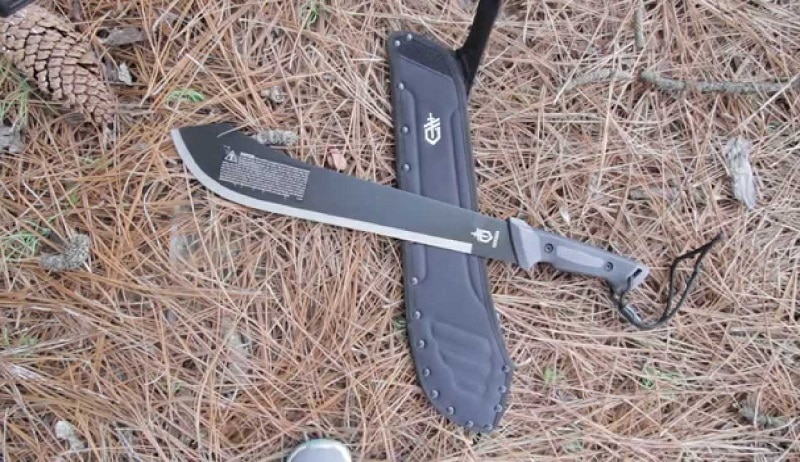
It’s the ideal blade for chopping wood, clearing dense undergrowth and vegetation, and cutting trees or other materials to make camp; its pointed blade also makes it an effective tool for self-defense. Because of its heft, the bolo machete does not work well for more delicate chores, like carving, whittling, or preparing food. It easily replaces a hatchet or axe, but you should still carry a knife along with your bolo machete.
Latin Machete
With its traditional look and balanced blade, the Latin machete is the machete of choice of the United States military because of its versatility in a range of environments and conditions. While the Latin machete may not be suited for heavy chopping, it is the perfect tool for lighter jobs, particularly in deciduous areas where saplings, underbrush, and briars cause problems and block your path.
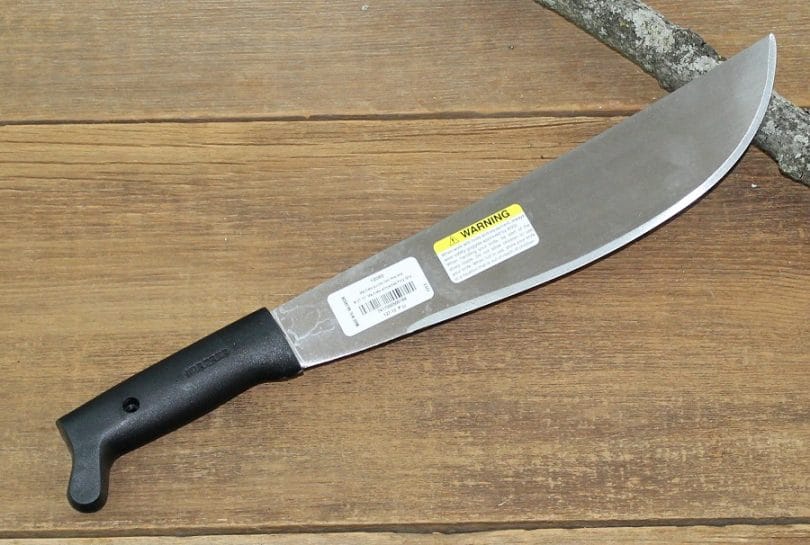
Latin machetes are lighter, more balanced, and less bulky than other types of machete, enabling you to perform more tasks for a longer period of time without tiring quickly as you would with a heavier blade. The Latin machete makes up for its lack of spear tip point with its unbeatable combination of leverage and reach.
If you plan to use this machete, you will likely need to carry an axe or hatchet as well, depending on the environment and your needs.
Panga Machete
The panga machete is widely used across the African continent and in the Caribbean because of its ability to deal with a variety of situations. Similar in weight and heft to the bolo machete, the panga machete has an intense chopping power ideal for chopping wood, hard trees, and dense, woody brush and vegetation.
The deep curve of its blade means this machete excels at slicing just as much as it does at chopping; moreover, while its upturned point may not make this the best tool for self-defense, it certainly allows the wielder to pierce objects, like hard fruits, with concentrated force.
Finally, its heavy weight may increase the user’s fatigue, but at the same time increases the durability of the machete, making it a good choice for those who plan to do lots of heavy chopping.
Barong Machete
This machete is not only a tool for self-defense but also a status symbol, particularly in the Philippines where it is the traditional weapon. The barong machete is recognizable by its distinctive, uniquely shaped blade, which resembles a long leaf.
Its pointed, curved blade makes the barong ideal for stabbing, thrusting, and slashing, and often the machete of choice if you want a blade specifically for the purpose of self-defense or survival.
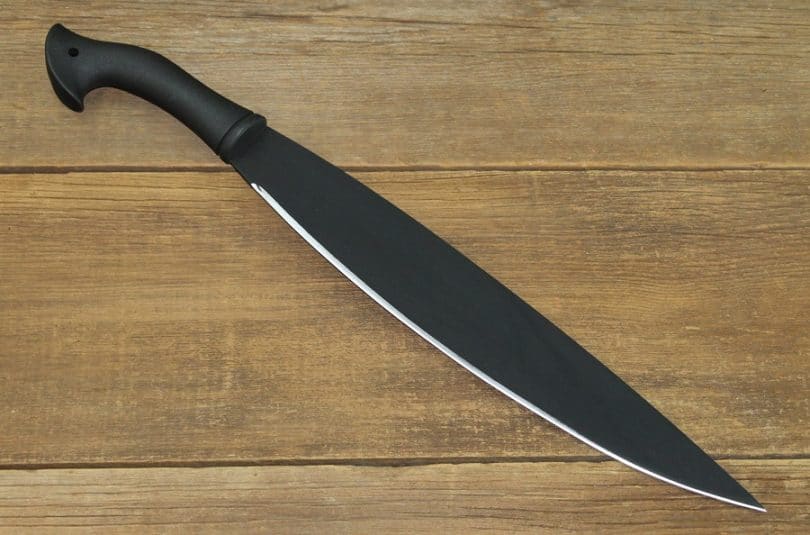
In fact, besides being used by tribes as a wartime weapon (European colonizers in the Philippines feared this blade’s ability to cut a rifle barrel clean through!), the barong is also used in several Filipino forms of martial arts, including Eskrima, Kali, and Silat. This blade lacks the chopping power and heft of a panga or bolo blade, so its use in the backcountry or wilderness situations is limited.
Bowie Machete
Woodsmen and hunters in particular, love the bowie machete. A large form of the bowie knife, the bowie machete takes its name from Jim Bowie, an American frontiersman, and remains popular among backwoodsmen and survivalists today. The blade comes to a clip point, also called a skinner tip because of its use for skinning and preparing wild game.
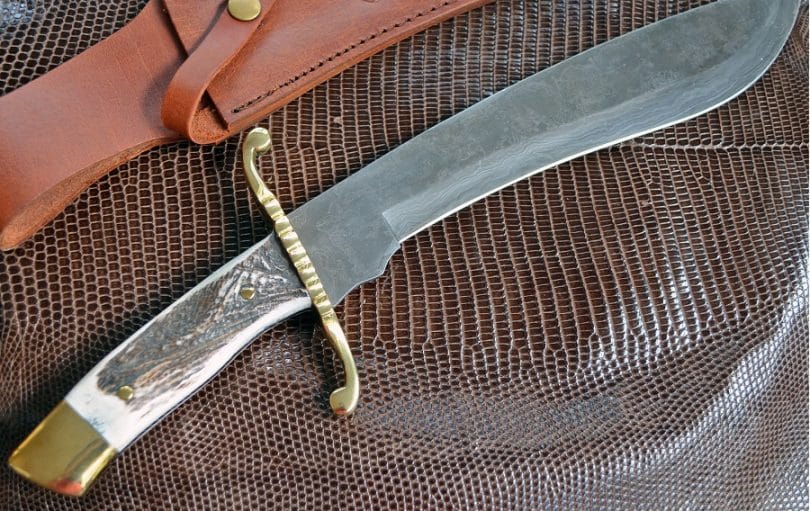
This blade works well for prepping food and completing lighter wilderness tasks, like slicing and carving; it is also an excellent utility blade or self-defense tool, though it lacks the power of a chopping blade. If you choose to carry a bowie machete, you should supplement this blade with an axe or hatchet for chopping and heavier jobs.
Woodsman’s Pal Machete
Unlike the other machetes in this list, the Woodsman’s Pal is not an internationally recognized type of machete, yet its unique design and functional style should earn it a place in any discussion of machetes. This machete has been designed specifically with backwoodsmen and wilderness aficionados in mind.
One edge of the heavy blade is ideal for chopping, while its distinctive, sickle hook tip makes clearing dense vegetation, brambles and briars, and thick vines, even at ground level, a breeze.
This blade is more compact than some of the others types of machete, and, despite its weight, is nicely balanced to prevent fatigue while providing good leverage and chopping power. This isn’t the best blade for self-defense, but it certainly performs well in most wilderness tasks.
Check out our expert review of the top bushcraft tool to help you with more options.
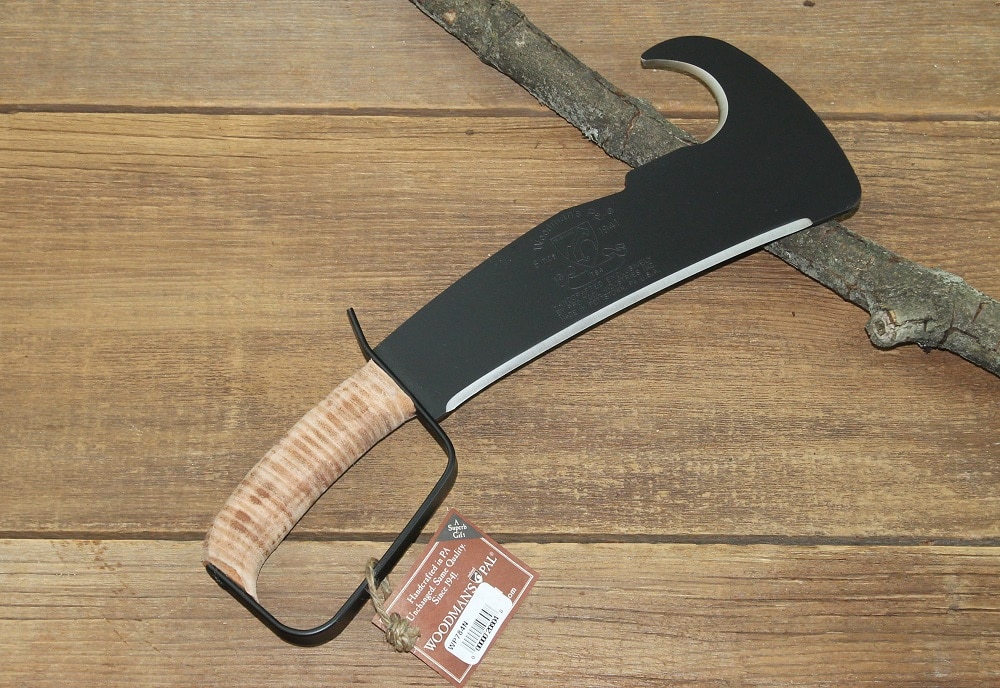
The following chart compares the types of machete discussed above and lists the pros and cons of each.
| Type of Machete | Ideal for | Pros | Cons |
| Kukri | All purpose wilderness and survival | Heavy chopper; spear point for self-defense; narrow blade for detailed work | Average performance at all tasks |
| Bolo | Heavy wilderness use, self-defense | Heavy chopping, slashing and brush clearing power; spear point for thrusting and self-defense | Heavy; bulky |
| Latin | Light to moderate wilderness use | Very well balanced; good combination of leverage and reach | Not good for heavy chopping or slashing; lacks spear point |
| Panga | Heavy wilderness use | Intense chopping power; durable | Heavy; bulky; lacks spear point |
| Barong | Self-defense | Unique design; light; slashing, thrusting, and self-defense | Not good for heavy work or wilderness survival |
| Bowie | Light wilderness use, especially hunting | Skinner tip for food prep; utility blade; may be used in self-defense | Not good for heavy work or chopping |
| Woodsman’s Pal | All purpose wilderness | Heavy chopping; unique sickle hook tip for clearing undergrowth especially at ground level; compact; well balanced | Not good for self-defense; does not slide into or out of a sheath easily due to unique design |
A final aspect of your machete to consider is the sheath. This is an often overlooked piece of equipment that’s just as important as the machete itself! On the most basic level, a sheath protects you from your own blade, ensuring your machete won’t cut or harm you when it’s hooked to your belt, pack, or gear.
[the_ad_group id=”23″]
A sheath also protects your blade from dirt, residue, and the elements. It’s impossible to keep a machete blade clean all the time, but when it’s not in use, the blade should be cleaned, oiled, and protected to increase its longevity. For easy instructions on how to make a sheath, see our earlier article for reference.
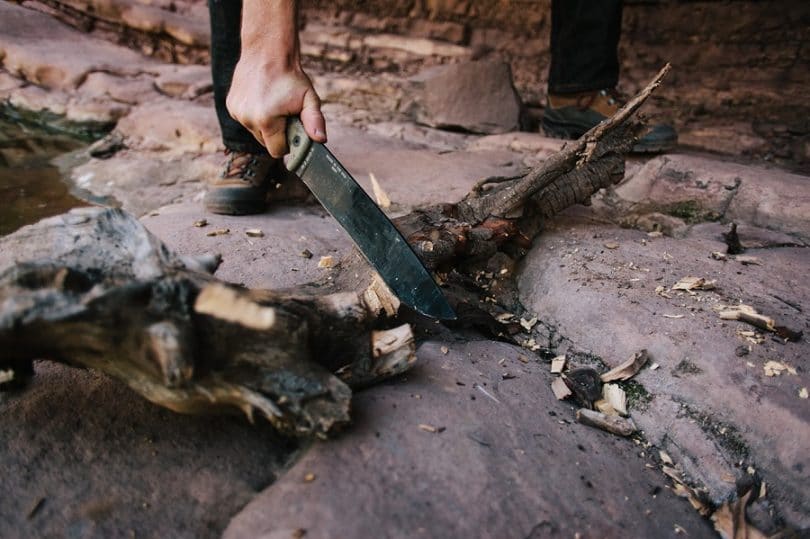
A sheath protects against damage when your blade is in storage, too. The type of sheath is a matter of personal preference. From skin or fabric sheaths with padded interiors to hard molded plastic models, it’s up to you to choose the sheath that best protects your machete while also performing in the environment and types of task in which it’s used.
Consider, too, the type of blade that you want or have, and the ease with which it slides in and out of a sheath. Depending on your needs, the relationship between the machete blade and the sheath may ultimately influence the type of machete that you choose.
See our article review of the best survival machete for your outdoor needs.


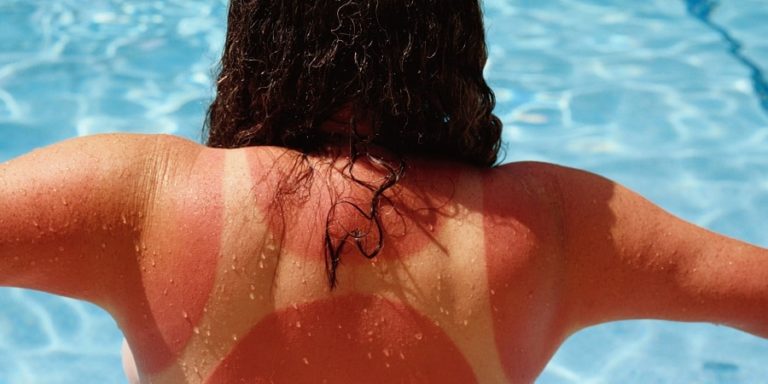



I’ve been in two minds whether to buy a machete for a while, my current setup involves an axe and a knife when camping or backpacking, however, others I have spoken to have said that a machete is likely to offer the same versatility as both these tools combined, without the extra space and weight. After reading this, I think the Kukri might just do the trick and replace the need for both tools as others have suggested! Really informative article, thanks Dennis!
Obtaining a Kukri is a good start, David. This complements your current setup because it is like in the middle of the knife and an axe. I look forward to hearing from your experience wielding a Kukri.
I’ve been in two minds whether to buy a machete for a while, my current setup involves an axe and a knife when camping or backpacking, however, others I have spoken to have said that a machete is likely to offer the same versatility as both these tools combined, without the extra space and weight. After reading this, I think the Kukri might just do the trick and replace the need for both tools as others have suggested! Really informative article, thanks Dennis!
Obtaining a Kukri is a good start, David. This complements your current setup because it is like in the middle of the knife and an axe. I look forward to hearing from your experience wielding a Kukri.
If you’re in the market for a solid machete for heavier tasks such as chopping wood/thick vegetation and that will last for years, I would highly recommend a Bolo.
I have an 18″ that I picked up from Tramontina machetes for just over $20 and I absolutely love it.
Machetes are designed to be workhorses and because the one I have was so cheap, I’m not afraid of putting it through hard use or damaging it.
It’s the perfect size and weight, and it holds a great edge, I really don’t have a bad word to say about them.
Good call on your 18″ from Tramontina. Machetes cover a very diverse price range, but even the most inexpensive ones deliver effectively. These blades are amazing and not to mention, really sharp.
If you’re in the market for a solid machete for heavier tasks such as chopping wood/thick vegetation and that will last for years, I would highly recommend a Bolo.
I have an 18″ that I picked up from Tramontina machetes for just over $20 and I absolutely love it.
Machetes are designed to be workhorses and because the one I have was so cheap, I’m not afraid of putting it through hard use or damaging it.
It’s the perfect size and weight, and it holds a great edge, I really don’t have a bad word to say about them.
Good call on your 18″ from Tramontina. Machetes cover a very diverse price range, but even the most inexpensive ones deliver effectively. These blades are amazing and not to mention, really sharp.
A really interesting article Dennis! I gained a lot of knowledge from this article. Sadly, not many people know about these machetes and their purposes. This article is specifically for those who are looking to get some detailed information regarding the types of machetes. Not too much information, only the useful one. Really an awesome article Dennis!
Thanks for the compliment, Jerry! Some individuals take machetes as pretty basic (even barbaric) melee weapons. The truth is, machetes are some of the most powerful weapons you can wield if you know how to wield it properly.
A really interesting article Dennis! I gained a lot of knowledge from this article. Sadly, not many people know about these machetes and their purposes. This article is specifically for those who are looking to get some detailed information regarding the types of machetes. Not too much information, only the useful one. Really an awesome article Dennis!
Thanks for the compliment, Jerry! Some individuals take machetes as pretty basic (even barbaric) melee weapons. The truth is, machetes are some of the most powerful weapons you can wield if you know how to wield it properly.